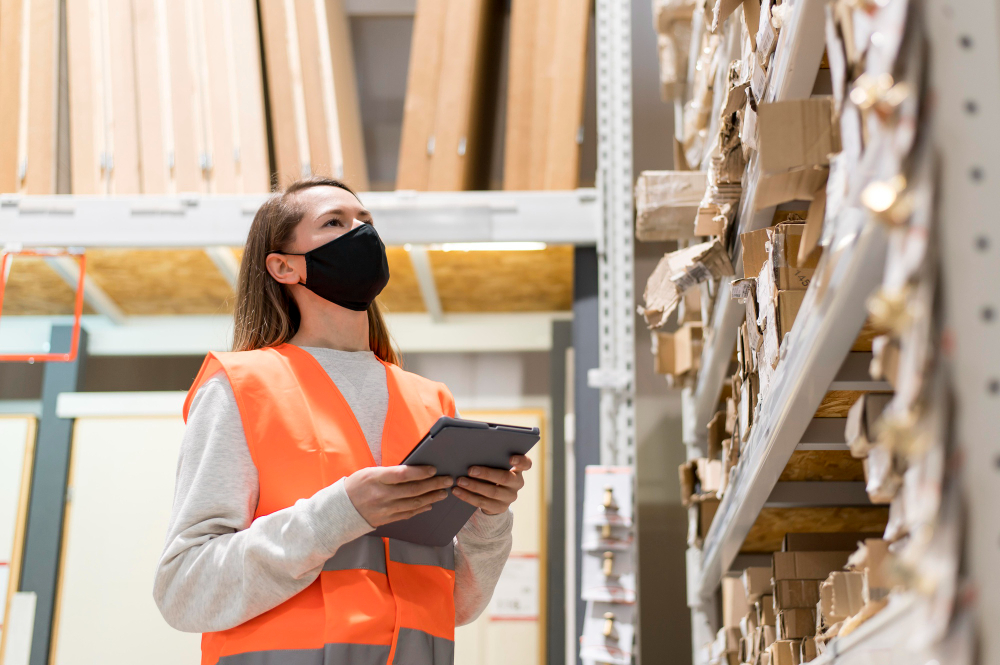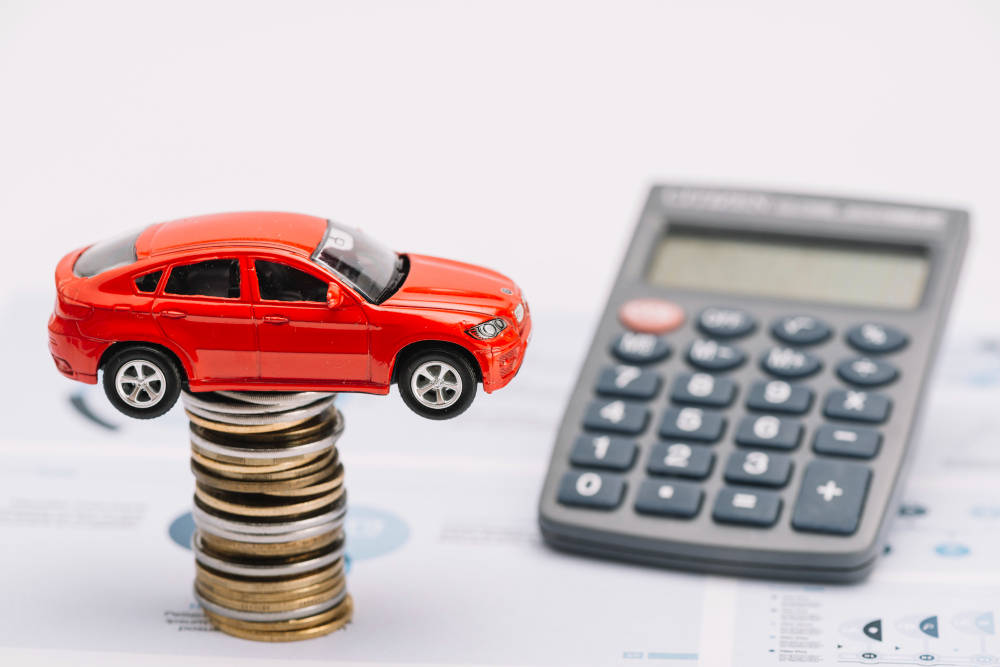Business
Why Automation Is the Future of Sales Compensation: The Rise of Incentive Compensation Management Software

In today’s digital-first business environment, one area is still shockingly manual: sales commission management. While sales teams are armed with AI-powered CRMs, marketing automation, and sophisticated analytics tools, their pay—their most important motivator—is often still managed in spreadsheets.
That disconnect doesn’t just create operational headaches. It creates mistrust, inefficiencies, and missed revenue opportunities.
Enter incentive compensation management software—a technology solution rapidly gaining traction among high-growth businesses looking to automate, align, and scale their sales compensation processes.
The Problem with Manual Sales Commission Workflows
For many companies, managing variable pay still involves:
- Complicated Excel spreadsheets
- Manual data pulls from CRM or ERP systems
- Error-prone formulas
- Delayed communication with reps
- Back-and-forth disputes between sales and finance
This manual workflow becomes unsustainable the moment a business starts to scale—or adds complexity to its comp plans, such as team-based goals, accelerators, or product-specific bonuses.
The result? Slower payout cycles, reduced rep trust, and wasted time in shadow accounting.
The New Standard: Incentive Compensation Management Software
Incentive compensation management software platforms like Compeasy are designed to automate the entire commission lifecycle. From plan modeling and commission calculation to dashboard reporting and dispute resolution, ICM software turns a chaotic, reactive process into a streamlined, proactive strategy.
These platforms are no longer “nice to have”—they’re essential infrastructure for modern revenue teams.
Key Features That Set Modern ICM Software Apart
- Automated Commission Calculation
No more late-night Excel troubleshooting. ICM platforms automate calculations based on real-time CRM or ERP data. Commission rules can be configured to match any level of plan complexity. - Real-Time Rep Dashboards
Sales reps get full visibility into how much they’ve earned, what they’re trending toward, and how to maximize their payout. This transparency increases motivation and reduces support tickets. - Quota & Territory Management
Modern platforms support territory assignments, quota changes, and team-based plans—enabling dynamic alignment with organizational strategy. - Audit Trails & Compliance
Finance teams benefit from clean audit trails, version history, and consistent policy enforcement—essential for SOX compliance or enterprise reporting standards. - CRM and Payroll Integrations
Top platforms like Compeasy integrate directly with Salesforce, HubSpot, ADP, QuickBooks, and more—so data flows seamlessly between systems.
Benefits Beyond the Sales Team
While it starts with sales, the impact of incentive compensation management software reaches across the organization.
- Finance Teams reduce manual work and increase payout accuracy.
- HR & People Ops gain insight into performance-driven compensation structures.
- Operations Leaders get better forecast accuracy and cost control.
- Executives gain clarity on ROI, strategy alignment, and sales efficiency.
In fact, companies that adopt ICM software report:
- Up to 65% faster commission processing
- 40% fewer commission disputes
- Improved rep satisfaction and retention
- Better alignment between sales activities and revenue goals
Scaling Smart: When to Invest in ICM Software
If you’re wondering whether it’s time to ditch the spreadsheets, here are signs your organization is ready:
- You manage more than 10 sales reps or territories
- Your comp plans include tiered structures, accelerators, or SPIFs
- Commission errors have caused friction or financial issues
- Finance is spending days each month on manual calculations
- Your sales team lacks visibility into their commission earnings
The earlier you implement incentive compensation management software, the faster your team can focus on closing deals rather than resolving commission confusion.
Why Compeasy Is Built for the Modern Sales Stack
Compeasy is purpose-built to help businesses of all sizes simplify their variable compensation process. With a flexible rules engine, intuitive UI, and real-time reporting, it gives organizations the ability to scale compensation operations alongside their growth.
Whether you’re managing a small team with a single plan or a national force with dozens of unique comp structures, Compeasy delivers clarity, automation, and trust—at a fraction of the cost of legacy enterprise systems.
Final Thoughts: Compensation as a Strategic Lever
As automation transforms every corner of the business, incentive compensation can no longer be left behind. Companies that digitize their commission management processes are seeing faster growth, fewer errors, and stronger alignment between sales goals and business outcomes.
Incentive compensation management software isn’t just a back-office tool—it’s a frontline asset that drives performance, trust, and transparency.
If you’re ready to automate and optimize how your sales team gets paid, start with a solution like Compeasy.
Business
Secrets to a Spotless Industrial Storage System

Industrial storage tanks are the unsung heroes of many operations. They hold everything from water and oil to chemicals and waste—often in large volumes, under pressure, and in demanding conditions. But like any hard-working system, these tanks require consistent upkeep. If maintenance is skipped or cleaning is delayed, performance can suffer—and risks can rise fast.
Keeping tanks spotless is more than just good housekeeping. It’s essential for safety, efficiency, and compliance. Whether you’re overseeing a small facility or a complex plant, understanding what goes into proper industrial tank care can make all the difference.
Why Tank Cleaning Should Be a Priority
Over time, all tanks accumulate residue. Oil tanks collect sludge, water tanks gather sediment, and chemical tanks can develop dangerous byproducts. Even tanks that appear clean may hide build-up in hard-to-reach corners or below fluid lines.
Ignoring this buildup can result in:
- Reduced capacity: Sediment and sludge take up space, limiting the usable volume of your tanks.
- Flow restrictions: Clogged outlets or uneven surfaces can interfere with consistent flow and pressure.
- Contamination risks: Residue can compromise the purity of stored substances or affect chemical reactions.
- Accelerated corrosion: Moisture and chemicals sitting in one place for too long can eat away at the tank’s structure.
Regular cleaning ensures you’re not just storing material—you’re doing it safely and efficiently.
What Gets Left Behind?
Tank residue can vary widely depending on what’s stored. Here are some common culprits:
- Sludge: Formed from settled particles, microbial growth, and oil breakdown over time.
- Scale: Mineral deposits from hard water or chemical mixtures.
- Rust: From oxidation, especially in steel tanks exposed to moisture or fluctuating temperatures.
- Residual chemicals: Leftover solvents or reactive materials from previous contents.
In industrial settings, cross-contamination is a serious concern. Without proper cleaning between uses or scheduled intervals, new batches of product can be compromised before they even leave the tank.
Signs It’s Time for a Clean
Even when not visible, dirty tanks leave a trail of clues. Watch for these indicators:
- Slower pumping or flow irregularities
- Strange smells coming from vents or access ports
- Cloudy or discolored output
- Increasingly frequent filter changes
- Internal sensors or gauges giving inconsistent readings
These symptoms suggest that residue may be affecting performance—and that it’s time for a full cleaning.
How Industrial Cleaning Is Done Right
Professional tank cleaning is a carefully planned process. It requires the right tools, trained personnel, and a safety-first approach.
Typical steps include:
- Tank drainage: All liquid contents are safely removed and collected for storage, disposal, or reuse.
- Ventilation: The tank is aired out to remove hazardous gases and reduce pressure.
- Confined space entry: Certified technicians enter the tank (if necessary), using protective equipment and monitored protocols.
- Manual or automated cleaning: Using pressure washers, chemical solvents, or rotary nozzles depending on the tank type.
- Waste disposal: All sludge and debris are safely collected and disposed of according to local regulations.
- Inspection: Once clean, tanks are inspected for corrosion, wear, or structural damage before being returned to service.
Done regularly, this process supports longevity and reduces the risk of emergency downtime.
Customized Schedules for Different Operations
Not every tank needs the same cleaning schedule. Frequency depends on the material stored, the environment, and the facility’s usage patterns. For example:
- Water tanks in clean environments may only need annual or bi-annual cleaning.
- Oil tanks often require cleaning every 3–5 years, or more often with high throughput.
- Chemical tanks may need cleanings after each product cycle to prevent cross-contamination.
- Outdoor tanks are more exposed to environmental contaminants and may need more frequent attention.
A good rule of thumb: if it’s been more than two years since your last deep clean, it’s worth booking an inspection.
For a deeper look at how expert cleaning can extend your equipment’s lifespan and improve operations, explore this industrial tank cleaning overview focused on safe and effective practices.
The Payoff: Efficiency, Safety, and Compliance
Well-maintained tanks operate more efficiently. Fluids move faster, sensors perform accurately, and less energy is wasted in compensating for clogged lines or blocked valves. Clean tanks also reduce the likelihood of workplace accidents, environmental incidents, or unexpected shutdowns.
From a regulatory perspective, staying on top of tank maintenance helps ensure compliance with environmental, health, and safety standards. Clean tanks demonstrate that your operation takes safety seriously—and that matters during inspections or audits.
Making Clean Part of Your Routine
Tank cleaning isn’t a one-time fix—it’s a long-term strategy. By incorporating routine cleaning into your maintenance calendar, you ensure that your facility stays ready, reliable, and productive no matter what’s in storage.
Investing in clean tanks is investing in operational excellence. The payoff is less downtime, fewer surprises, and a stronger foundation for everything your facility does.
Business
Junk Cars for Sale: Finding Value in What Others Leave Behind

Most people drive past a rusted, non-running car and see nothing but an eyesore. But for mechanics, DIYers, and resourceful buyers, junk cars for sale are full of possibilities. From hidden parts and repairable frames to full-on rebuild potential, junk cars often contain more value than meets the eye.
In today’s high-priced used car market, junk vehicles represent one of the last frontiers of affordable ownership — or profitable part-outs. Whether you’re buying for scrap, reuse, or a new project, this guide will help you understand how to navigate the junk car market and uncover real value from what others have left behind.
What Counts as a Junk Car?
The term “junk car” typically refers to vehicles that are no longer roadworthy due to mechanical failure, accident damage, or neglect. These vehicles are often:
- Non-running
- Missing major components (engine, transmission, electronics)
- Severely rusted or corroded
- Previously stripped for parts
- Carrying a non-repairable title
However, some cars listed as junk may still have usable frames, body panels, or drivetrains. That’s where experienced buyers see opportunity — especially when these cars are priced far below their potential parts value.
Who Buys Junk Cars?
The junk car market attracts a wide range of buyers, including:
- Mechanics and repair shops – For sourcing cheap replacement parts or rebuildable frames.
- DIYers and tinkerers – Looking to fix up a car as a learning experience or low-cost project.
- Scrap metal dealers – Who buy vehicles for their weight in recyclable materials.
- Auto parts resellers – Dismantling vehicles to sell components online or locally.
If you’re someone who enjoys problem-solving, working with your hands, or making a little money on the side, junk cars for sale could be your entry point into the automotive world.
Where to Find Junk Cars for Sale
Most junk vehicles are sold through online salvage auctions, insurance auction sites, or local classifieds. Some common places to search include:
- Platforms listing salvage cars for sale
- Insurance auction sites that offer wrecked cars for sale
- Repossession and liquidation marketplaces
- Listings from tow companies or scrapyards
In addition to junk cars, these platforms often feature:
- Damage car for sale listings
- Repairable salvage cars for sale
- Wrecked trucks for sale
- Crashed bikes for sale
- Broken trailers for sale
Using broad search terms and filters helps uncover hidden listings that might not be labeled explicitly as “junk.”
Evaluating a Junk Car: What to Look For
Just because a car is labeled “junk” doesn’t mean it’s worthless. Here’s what you should consider when assessing a listing:
-
Parts Value
Research what components the car still has and how much they typically sell for. Engines, transmissions, wheels, headlights, body panels, and catalytic converters often retain value even when the rest of the vehicle is shot.
-
Title Status
A vehicle with a clean or salvage title may technically be “junk,” but still legally restorable. However, cars with non-repairable titles can never be registered again and are strictly for parts or scrap.
-
Frame Condition
A car with a straight, rust-free frame could be the foundation for a future rebuild — especially if you already have parts on hand.
-
Demand for the Model
Popular models with a large community (e.g., Hondas, Toyotas, BMWs, trucks) tend to have higher parts demand, making junk versions more valuable for resellers.
What Can You Do With a Junk Car?
Once you’ve bought a junk car, there are several paths you can take:
-
Part It Out
Sell the working parts individually — engine components, transmission, wheels, doors, mirrors, interior trim, electronics, etc. In some cases, a single car can generate more money in parts than it would fetch in one piece.
-
Repair and Rebuild
Some junk cars may be listed this way due to cosmetic damage, electrical issues, or missing paperwork. If you can solve the problem and legally title the car, you may come out ahead.
-
Use It for Education
Junk cars are excellent tools for learning automotive repair without risking damage to a valuable vehicle. Schools, students, and hobbyists often use them for training and experimentation.
-
Scrap It
If the car is truly beyond repair or value, it can still be sold for its weight in scrap metal. This is especially useful if you get the vehicle at a very low price.
Junk Cars vs. Other Salvage Vehicles
It’s helpful to understand how junk cars fit into the broader salvage market. Here’s how they compare:
| Vehicle Type | Roadworthy? | Typical Use | Value Potential |
| Junk cars for sale | No | Parts or scrap | Low to moderate |
| Salvage cars for sale | No | Repair or parts | Moderate to high |
| Rebuilt cars for sale | Yes | Driving/resale | High |
| Repo cars for sale | Yes | Ready to drive | High |
| Crashed cars for sale | No | Repair, track, or parts | Moderate |
| Broken trailers for sale | Sometimes | Reuse, conversion | Moderate to high |
If you’re after low-cost components or educational opportunities, junk cars are ideal. If you’re aiming for a daily driver, a rebuilt or repairable salvage car may be a better fit.
How to Buy a Junk Car Through an Auction
Most auctions that list junk cars are open to public buyers, though some require you to use licensed IAA brokers. Here’s a typical process:
- Register for the platform – Some require deposits or fees.
- Browse listings – Use filters like “salvage,” “non-runner,” or “junk.”
- Review listing details – Look for engine status, title type, damage reports, and photos.
- Set a maximum budget – Factor in transport, parts storage, and any disposal costs.
- Place your bid – Many platforms allow live or proxy bidding.
- Arrange transport – Most junk cars must be towed or hauled.
Platforms also list items like repairable trucks for sale, salvage motorcycles for sale, and bank repossessed cars with prices often much lower than retail.
Tips for Getting the Best Value
To make the most of your purchase:
- Compare models – Focus on vehicles with high resale or parts demand.
- Buy in bulk – Some parts dealers buy multiple junk cars to maximize shipping efficiency and inventory.
- Have a teardown plan – Know which parts you’ll remove, test, and list for resale.
- Check local scrap rates – If the car has no usable parts, make sure scrap value will still cover your costs.
Final Thoughts
Junk cars for sale may not win beauty contests, but they’re filled with hidden potential. Whether you want to flip parts, learn repair skills, or just experiment with a low-risk purchase, the junk market gives you freedom that no dealership can match.
In a world where every penny counts, reclaiming value from what others throw away isn’t just smart — it’s satisfying. So the next time you see a beat-up old car online or on a lot, ask yourself: is this really junk… or is it your next opportunity?
Business
5 Ways Salazar Local Marketing Agency Can Enhance Your Local Outreach

In today’s fast-paced digital world, connecting with your local community is more important than ever. Whether you’re a small business owner or managing a growing enterprise, reaching the right audience in your area can significantly impact your success. This is where a specialized partner like Salazar Local Marketing Agency comes into play. With their expertise in local outreach, they help businesses thrive by creating meaningful connections within their communities.
If you’re curious about how Salazar Digital Marketing can elevate your local presence, here are five powerful ways they can enhance your outreach efforts.
Tailored Local SEO Strategies That Drive Results
When it comes to local marketing, Search Engine Optimization (SEO) is the backbone of visibility. Salazar Local Marketing Agency understands that generic SEO won’t cut it for businesses targeting specific neighborhoods or cities. Instead, they focus on hyper-local SEO tactics designed to put your business on the map—literally.
By optimizing your website and online listings for local search terms, they ensure that when potential customers search for products or services in your area, your business appears at the top of the results. This involves refining your Google My Business profile, incorporating location-specific keywords, and encouraging customer reviews that boost your credibility. The result? Increased foot traffic, more calls, and ultimately, higher sales.
Engaging Community-Focused Content Creation
Content is king, but local content is the crown jewel. Salazar Digital Marketing knows that people connect best with stories and messages that feel relevant to their daily lives. That’s why they prioritize creating content that resonates with your local audience.
From blog posts about neighborhood events to spotlight features on local partnerships and customer stories, the agency crafts content that speaks directly to your community. This approach not only builds trust but also positions your business as an active and caring member of the local scene. When customers see that you’re invested in their community, they’re more likely to choose your services over those of a faceless competitor.
Strategic Social Media Management with a Local Twist
Social media is a powerful tool for local outreach, but it requires a nuanced approach to be effective. Salazar Local Marketing Agency excels at managing social media channels in a way that highlights your local relevance while fostering genuine engagement.
They analyze the social habits of your target audience and tailor posts to reflect local interests, events, and conversations. Whether it’s promoting a local sale, sharing community news, or responding to customer inquiries promptly, their social media strategy is designed to build a loyal following. This kind of active, localized presence helps your brand stay top-of-mind and encourages word-of-mouth referrals within your area.
Data-Driven Advertising That Targets Your Neighborhood
Advertising can sometimes feel like throwing money into the void, especially if it’s not targeted effectively. Salazar Digital Marketing approaches advertising with precision, using data to ensure your ads reach the right people at the right time.
They leverage tools like geo-targeting to focus your ad spend on specific zip codes, neighborhoods, or even radius-based areas around your business. This means your promotions aren’t wasted on audiences who are unlikely to convert. Additionally, they continuously monitor and optimize campaigns to improve performance, making sure every dollar works harder for your local outreach goals. The impact is measurable growth in local inquiries, website visits, and in-store traffic.
Building Partnerships and Local Collaborations
One often overlooked aspect of local marketing is the power of partnerships. Salazar Local Marketing Agency recognizes that connecting your business with other local organizations can multiply your outreach efforts.
By facilitating collaborations with community groups, local influencers, and complementary businesses, they help you tap into new customer bases. These partnerships can take many forms—from co-hosted events and joint promotions to cross-marketing campaigns. Such initiatives not only increase your visibility but also reinforce your reputation as a community-focused business. People tend to support brands that actively contribute to their local ecosystem, and Salazar helps you position yourself exactly that way.
Why Choose Salazar Local Marketing Agency?
Choosing the right marketing partner is crucial, especially when your goal is to strengthen local outreach. Salazar Digital Marketing stands out because of their deep understanding of local markets and their commitment to personalized service. They don’t believe in one-size-fits-all solutions; instead, they take the time to learn about your business, your audience, and your community before crafting strategies that truly work.
Their team combines creativity with analytics, ensuring that every campaign is both engaging and effective. Whether you’re just starting to build your local presence or looking to refine and expand your existing efforts, Salazar Local Marketing Agency provides the expertise and support you need to succeed.
Final Thoughts
Local outreach isn’t just about being seen—it’s about being relevant, trusted, and connected within your community. Salazar Local Marketing Agency offers a comprehensive approach that covers everything from SEO and content creation to social media management, advertising, and strategic partnerships.
By working with them, you’re not just investing in marketing services; you’re investing in a stronger relationship with your local audience. In a world where consumers increasingly value local connections, that investment can pay off in lasting loyalty and sustained growth.
If you’re ready to take your local outreach to the next level, consider partnering with Salazar Digital Marketing. Their tailored strategies and community-focused mindset can help your business become a true local favorite.
-

 Travel4 months ago
Travel4 months agoSave on Campervan Rentals with a roadsurfer Gutscheincode
-

 Travel4 months ago
Travel4 months ago10 Things to Do in Punta Mita
-

 Travel5 months ago
Travel5 months agoBest Things to Do in New York City – Ultimate Travel Guide
-

 Real Estate4 months ago
Real Estate4 months agoHow to Be the Best Real Estate Agent Murfreesboro
-

 Photography5 months ago
Photography5 months agoThe Ultimate Guide to 35mm Film Developing Lab
-

 Real Estate4 months ago
Real Estate4 months agoFind the Best Real Estate Agents Main Line
-

 Real Estate4 months ago
Real Estate4 months agoExplore New Real Estate Programs in Marrakech
-

 Travel3 months ago
Travel3 months agoTailored Tours to Switzerland | Private & VVIP Experiences





















